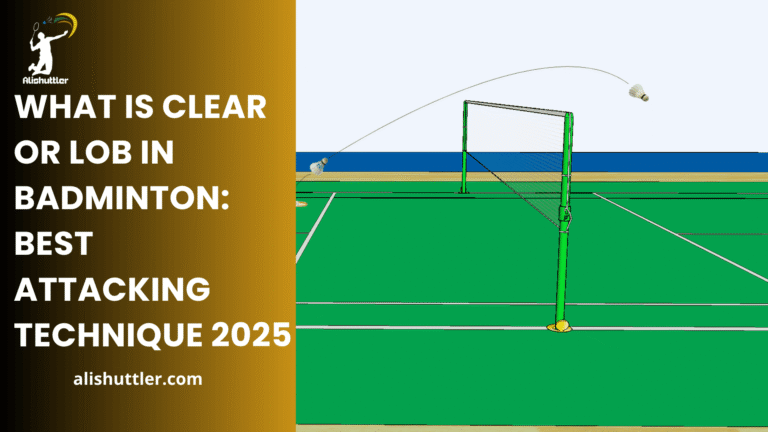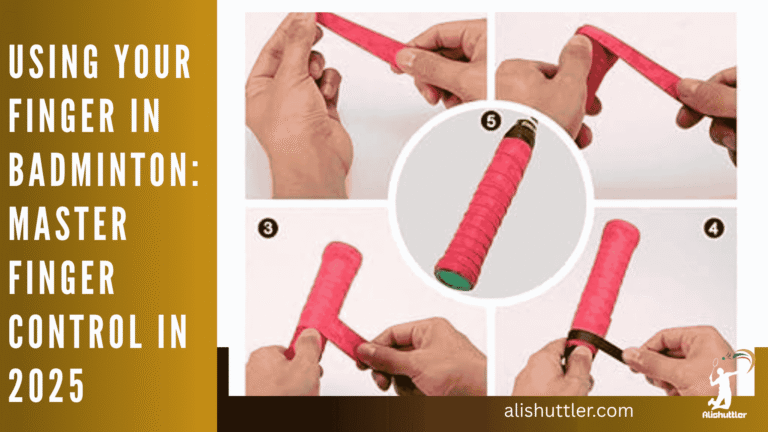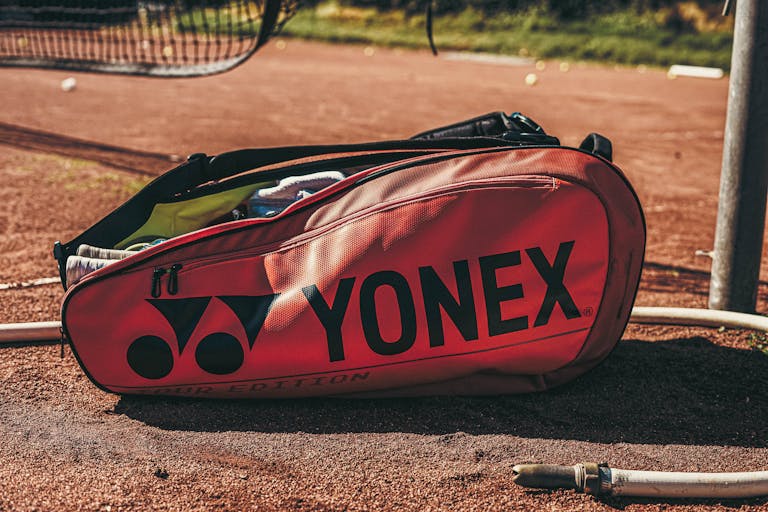Drop shot mastery translates to expert-level control of the drop shot in tennis, badminton, and pickleball.
Drop shot masters can deploy soft, short shots to vary the rhythm and keep opponents shuffling. Decent footwork, quick hands, and intelligent shot selection all contribute. Mastering these can turn the tide of tight matches.
The following chapters discuss simple approaches for developing drop shot abilities.
The Core Skill
Drop shot mastery is about more than just gently dinking the ball or shuttlecock over the net; it incorporates finesse techniques and strategic advantage to unravel an adversary’s timing and crack open the court. With the prevalence of successful drop shots, particularly in tennis, where forehand drop shots make up more than 50% on the ATP Tour, executing them properly can significantly alter the momentum of any match.
Finesse
- Experiment with various grips to improve your shot manipulation.
- Adjust wrist movement for a softer touch.
- Concentrate on the position of your racket or paddle at impact.
- Practice placing the shot close to the net edge.
- Mix in different swing speeds to vary pace and drop depth.
Finesse is playing the shot with delicacy. Little variations in grip or wrist motion can transform a drop shot from too high and easy to attack, to just kissing the net and dropping softly. Slow drops are good practice in honing this skill.
By adjusting the velocity and slant, players can position the ball or shuttlecock such that it lands just beyond the net, thus making it difficult for the opposing player to retrieve. Spot drills near the net, repeated as many as 15 times, develop muscle memory and shot consistency.
Deception
Fooling them is what makes the drop shot work. You aim to cloak your purpose until the very last second, forcing them to divine. Interspersing drop shots with your normal groundstrokes or clears keeps you unpredictable.
Watching pros like Carlos Alcaraz or Iga Świątek, you can see how they use their body and grip to conceal what they’re about to do, sneaking a drop when you least expect it. Players can learn a great deal by analyzing video clips of matches.
By searching for times when a player pretends to take a big swing but instead attempts a soft drop, just about anyone can identify the patterns. Experimenting with these feints in practice makes the skill more organic in real games.
Mixing shot selection keeps the opponent guessing. Occasionally, the drop shot functions as an offensive weapon, evidenced by the 53.3% of tour drops in attack. Other times, it’s to disrupt the pace, especially on slower surfaces such as clay courts, where the ball decelerates and dies quickly.
Strategy
A good drop shot strategy works its way into a player’s larger game strategy. Not just blasting off a random shot, but choosing the right moment. For instance, when your opponent is deep behind the baseline, a drop shot can send them charging forward, frequently leaving room open on the follow-up shot.
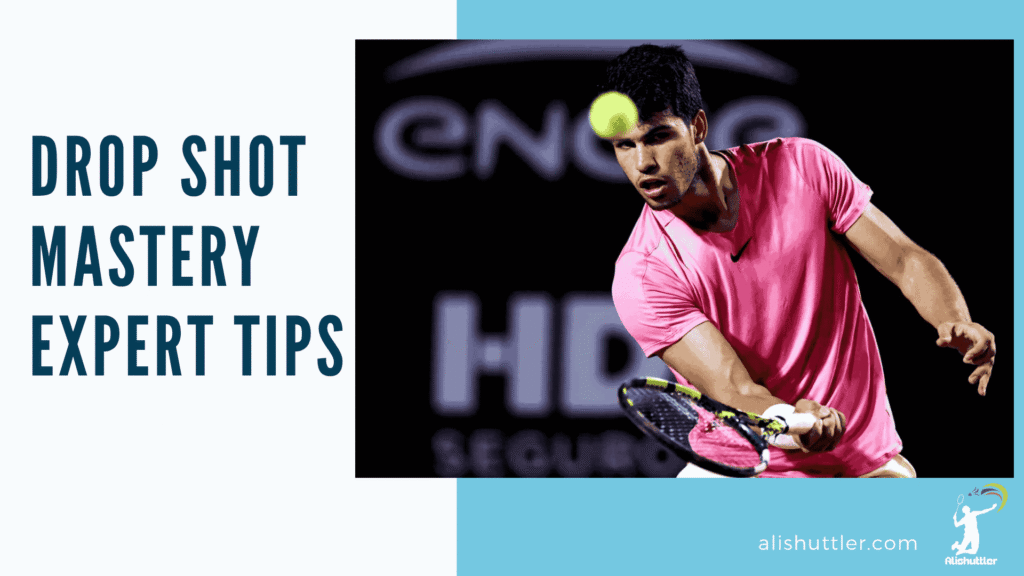
Knowing an opponent’s habits is helpful. If they’re slow approaching the net, that’s an obvious opportunity to drop. In close contests or when the tempo is fast, the drop shot can shatter a rhythm and induce errors.
Players strategize with variations in timing early to probe an opponent’s positioning, or late to exploit exhaustion. Timing is the most important. The drop decision has to be split-second, based on both the ball’s velocity and the opposing player.
Mastering Execution
Drop shot mastery in bass fishing is more than touch and timing; it demands a total understanding of grip, motion, and hook selection. Appreciating these fundamental components allows anglers to deploy successful drop shots with finesse, not fortune.
1. Grip and Feel
Discovering your ideal grip style is crucial. Some players employ a continental grip, while others might tweak it a bit for additional spin or control. The most effective way to discover what suits is to experiment with various grips during practice, both with a racket and even just shadowing the shot.
A loose grip helps you control the ball’s pace and descent. Too tight, and the ball can bounce too high or too deep. Players like Federer have those soft hands that allow you to hide the shot until the last split-second.
By adjusting grip pressure, you can strike gentler, shorter, or angled drop shots. Solo practice against a wall builds this feel, and varying your grip pressure on each shot instructs how to place the ball just over the net or out to the side.
2. Biomechanics
Deconstructing the drop shot reveals how the body moves as one. The wrist, elbow, and shoulder form a chain, sometimes referred to as the kinetic chain. If one is stiff or off cadence, the shot loses its bite.
The best drop shots employ the body’s natural momentum, not just the arm. Good posture, knees bent, back straight, provides more equilibrium and assists in directing the racket face.
All pieces need to flow in unison. Take the clay courts, for instance because the bounce is slower, players can use more wrist and impart heavy spin to make the ball die.

When you watch the best, like Carlos Alcaraz, you see how a lazy stroke begins in the legs, peaks in the torso, and crashes back down at the fingertips, allowing the ball to drape ever so gently over the net.
3. Footwork and Position
Swift feet are essential to any good drop shot. Speed and balance drills, ladder drills, shadow swings, etc., pay off. Without good footwork, your best touch won’t do you any good.
In addition, a balanced position allows the players to react quickly for a second drop or deep follow-up. Many of the best points start with sound position: step in early, stay light on the toes, and keep the body square to the net.
Position also equates to reading the court if your opponent is playing too far back, a drop shot can change momentum and compel a frail response.
4. Deception and Timing
Timing is everything. When the opponent least expects it, a well-timed drop shot is a devastating weapon. Reading your opponent’s moves helps determine when to attack.
Lying complicates matters further. Concealing a drop shot until the very last second—by offering the same setup as a drive makes it more difficult to anticipate.
Drills that intersperse drop shots and normal groundstrokes develop this ability. Timing + disguise = best results.
5. Common Pitfalls
One error is overdoing drop shots. Overuse them, and they make patterns easy to detect.
Being too greedy results in bad shot selection or being caught out of position. When a drop shot goes awry, analyze it. That is, was the grip too tight? Feet too sluggish?
Every mistake is an opportunity to improve.
Strategic Application
Mastering the drop shot technique is about more than finesse; it involves timing its application and reading your opponent’s tells. By employing successful drop shots and clever psychological maneuvers, you gain a strategic advantage, injecting complexity into your game.
When to Strike
Timing is everything. The opportune drop shot frequently arises when your opponent is far behind the baseline or retreating rapidly. At these times, a strategically timed drop shot, mere centimeters over the net and close to the kitchen line, sends your opponent scrambling forward, more prone to making a mistake.
Monitoring for these opportunities allows you to employ the drop shot as a weapon, not a mere reflex. Watch where your opponent moves in every rally. If they’re off balance or leaning to one side, those are prime opportunities to drop shot. If they appear poised and near the cage, the danger escalates.
Constantly dropping in easy situations will make you predictable, so vary your shots for optimal effect. A feel for timing that suits the flow of the match is developed with practice and patience.
Reading Opponents
See your opponent’s move before you make yours. Little indicators like transferring weight to a single foot or holding the paddle low can inform you of the anticipated shot. If you catch them flat-footed or weighing on their forehand side, a drop to their backhand can surprise them.
Observe their body language as the rally progresses. If their eyes follow your paddle or they lunge ahead of your swing, they could be anticipating your shot. Take this insight to pretend or switch your strategy last second.
Designing cone drills to target locations develops your capacity to hit shots where your competition is least prepared. Working on drop shots 2-3 times per week, honing this strategic sense, and making you notice opportunities more frequently in real games.
Psychological Edge
It takes time to build trust in your drop shot. Drills where you tap the ball with a soft touch—the bottom half of the ball and quickly train you to control speed and placement. A regular schedule, including backhand drop shot drills, nurtures this talent despite being more difficult than the forehand.
Use your drop shot to break up your opponent’s mental cadence. If you confuse drop shots with other strokes, you make them pause, disrupting their momentum.
When you demonstrate fearlessness, you can cause your opponents to doubt their own decisions, giving you a psychological advantage.
The Right Equipment
PP-Drop shot domination is about more than just skill. The right equipment goes a long way, on the court or by the water. Properly cared for equipment, tailored to your style and attitude, lets you get the maximum out of every play.
The Best Bass Fishing Rigs For Drop Shotting:
- Drop shot rig with small, fine-wire hook and frisky plastics.
- Texas-rigged finesse worm for fishing near wood cover
- Palomar knot for horizontal bait presentation
- Fluorocarbon leader (15–20 inch) for clear water stealth
- Main line of 12–15 lb test braid to minimize stretch and increase hook setting
Racket Sports
| Brand | Model | Weight (g) | Balance | Grip Sizes | Impact on Finesse |
|---|---|---|---|---|---|
| Yonex | Astrox 88S | 83 | Even | G4, G5 | Good touch, quick snaps |
| Babolat | Pure Drive | 300 | Head-light | 0–5 | Control, sharp feedback |
| Wilson | Pro Staff 97 | 315 | Head-light | 1–4 | Soft feel, stable shots |
| Victor | Jetspeed S 12 | 88 | Even | G5, G6 | Fast swings, accuracy |
Testing rackets from brands such as Yonex, Babolat, and Wilson helps to narrow down the perfect match. Every model has a different weight and balance feel. Certain players enjoy lighter rackets for fast wrist strokes, while others want a little extra weight for maneuvering.
Grip size is important, as well. Too small or too large of a grip will mess with your drop shot touch!
Fishing Rigs
| Rig Type | Line Length (cm) | Weight (g) | Best Use Case |
|---|---|---|---|
| Standard Drop Shot | 38–51 | 7–10.5 | Shallow water, clear days |
| Texas Rig Drop Shot | 38–46 | 10.5–21 | Wood cover, snag-prone |
| Long-leader Variant | 51+ | 10.5–21 | Deep, pressured fish |
The right drop shot rig matters for bass fishing. Use a main line of braid (12–15 lb test) to take out stretch, along with a 15–20 inch fluorocarbon leader. This rig holds your bait looking natural, particularly in clean water.
A Palomar knot lays the bait flat, which helps generate bites. For deep water (3m +), the heavier weights (10.5–21 grams) keep the rig grounded. In shallow water, eye-light weights (as low as 7 grams) work best.
Hook size must complement bait and cover. For open water, a small finesse hook does the trick. Around wood or brush, a Texas-rigged worm on a 1/0 or 2/0 hook prevents you from snagging.
Soft plastics, such as worms or minnows, are good choices. Experiment with shapes and colors until you find what the fish desire.
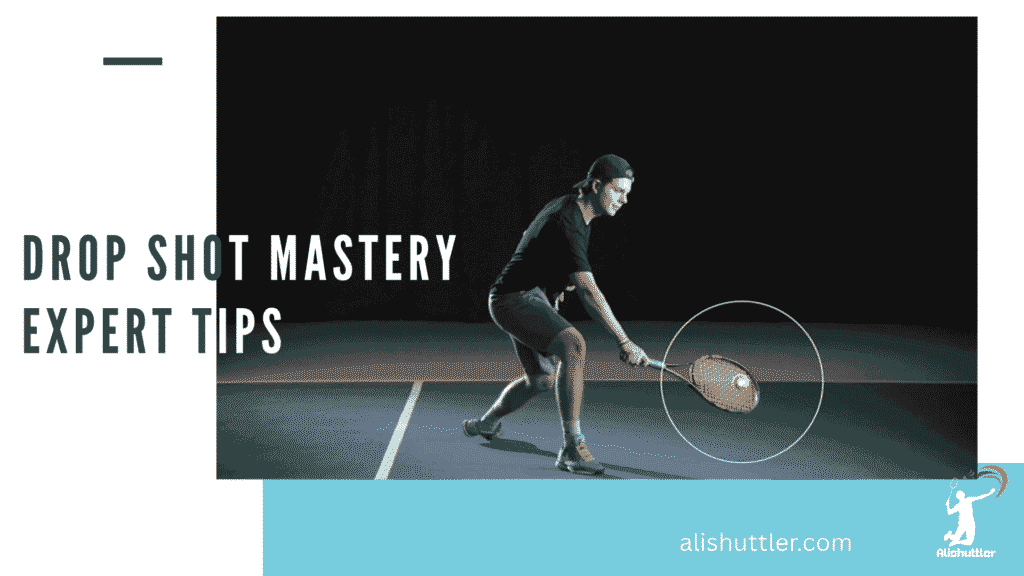
Equipment Care
Keep your racket strings fresh! Swap them out when they lose their stretch. Inspect grips for sweat corrosion. Wipe down frames post-use.
Check the fishing line for nicks. Switch from stale hooks and jigs. Seal soft plastics in sealed bags.
Wipe down rods and reels after fishing. Oiling moving parts when necessary.
Check your equipment before every outing.
Advanced Training
Advanced drop shot training isn’t just about hitting the ball; it’s about constructing skills intentionally through effective techniques. Finesse fishing tactics, like successful drop shots, emphasize the importance of drills, feedback, and analysis for players to master control and decision-making.
Drills
- Partner target drill: Both players stand at the baseline. One lays it up short and the other attempts a drop shot, for a designated target zone by the net. Repeat for 10-15 shots each.
- Shadow drop shot drill: Without a ball, practice the motion gentle swing, contact near the bottom half, and soft follow-through switching between forehand and backhand.
- Wall rebound drill: Hit drop shots against a smooth wall, aiming to make the ball land close to the wall after each shot. This assists in touch and control.
- Pressure drill: With a partner, simulate match play for 5-minute rounds, using only drop shots. This builds fast decision-making and equilibrium.
VideoA analysis supplements these drills for successful drop shots. By recording sessions, anglers can view footage to identify tendencies like off-balance shots or hurried transitions, helping to observe improvements and pinpoint areas of weakness, such as irregular ball contact or missed targets.
Analysis
Match footage review is a critical step. Observe with a specific purpose—note when drop shots work or when they don’t. Watch for times when the shot results in points or leaves you vulnerable to counterattack.
Trends show up after several revisits. Perhaps you’re an indiscriminate drop shotter, employing it solely on the forehand side or at high-tension points. Observing these patterns aids you in tweaking your strategy. For instance, balancing forehand and backhand, or mixing in more drop shots when the other player hangs back.
Statistical analysis takes this one step further. Include drop shots per match, success rates (how often they win the point), and unforced errors. Numbers indicate whether a drill is effective or if technique adjustments are required.
Feedback
Obtaining feedback is essential. Coaches can identify things difficult to see from within the game, such as footwork errors or off-hand grip. Peer feedback matters too, a training partner can tell you if your drops are too high or too hard.
After each session, request one explicit tip to concentrate on next time. Whether it’s slowing your swing or better weight shift, small changes accumulate over weeks. Repeat drills, tweaking each time.
Technique Focus
Advanced drop shots call for subtle shifts. A softer grip, gentle swing, and low contact point all count. Balance work at staying balanced before, during, and after each shot.
Experiment with both forehand and backhand drops. Each exercise works different muscles. Switch frequently in drills to remain well-rounded.
Equally important is knowing when to employ a drop shot. Practice reading your opponent’s position so you can select the perfect moment.
The Unseen Element
Drop shot mastery in bass fishing is more than just technique; it involves finesse techniques and the ability to adapt to changing circumstances. Both gut feeling and flexibility are as crucial as the equipment in your hand.
Intuition
Quick reaction is the secret to successful drop shots. Trusting your gut on when to drop the rig or pause the bait makes all the difference, particularly when fish are skittish or the water is clear. Sometimes it means letting a soft plastic hover just above a weed bed or allowing a leech to dangle when the current dies down. This finesse fishing tactic requires an understanding of timing and positioning to maximize effectiveness.
Timing things well necessitates consistent effort. With a rod measuring 2-2.1M, you can feel the line and sense when a bass is curious but not ready to bite. Eventually, with enough casts, you catch hints—like the way a line twitches or a weight drops. The perfect moment to twitch or suspend the bait becomes instinctual, enhancing your ability to execute the standard drop shot technique.
Recapping every trip goes a long way. Remember what worked when you hooked fish with the hook 50 cm above the sinker, or when a 4-foot leader fooled line-shy bass. By reflecting on these moments, you become keener at reading subtle cues and making smarter decisions, ultimately improving your bass fishing skills.
Adaptability
Being adaptable matters in bass fishing. Not all fish react in the same way, so experiment with adjusting the hook and sinker distance, which can range from 25-60 centimeters, or higher. This allows you to attract fish that hang close to the bottom and those willing to rise to the surface for a snack. Using successful drop shots can enhance your effectiveness in this process.
In a round, things can switch quickly. If a fish skips a minnow, reach for a skinny soft plastic. If a 1/8 oz sinker drifts too far, trade it out for a heavier one to hold the bait still. Sometimes a longer leader, or a discreet eight-strand braid, makes your rig less conspicuous in clear water, improving your chances of success.
All of these little tweaks are reactions to what’s going on in the moment. After each game or outing, capture what needs tuning. Perhaps in deeper water, a longer rod provided superior control, or a different sinker helped keep the bait in the strike zone.
These teachings get you dialed faster the next time you’re out on the water, enhancing your bass fishing strategies.
Final Thoughts
Drop shot moves shift the tempo of a match quickly. They demonstrate that sharp skill and good timing still matter. Fine equipment aids, but clever application on-court scores. Top players pepper in drop shots to keep opponents on their toes. An effective drop shot can shatter a long rally or create room for an easy strike.
Practice honing your touch and keep the shot fresh. Even a minor alteration in grip or swing can turn a match. Need a boost to grow your game? Review your set-up and watch for trends. Stay hungry and challenge your talent. Every mini-step with drop shots can mean a mega-win.
Frequently Asked Questions
What is the key skill needed for drop shot mastery?
The secret to a successful drop shot technique is the exact control of racket angle and touch, allowing you to softly brush the ball or shuttle for precision.
How can I improve my drop shot execution?
Work on slow, controlled swings using finesse techniques for successful drop shots. Be sure to keep your wrist loose and light for precision.
When is the best time to use a drop shot in a game?
Try a successful drop shot technique when your opponent is away from the net or anticipating a deep shot. This surprises them and compels them to lunge forward.
What equipment helps with drop shot mastery?
Opt for a lightweight racket or paddle with a cozy grip to enhance control and assist you in tailoring angles for a successful drop shot technique.
Are there advanced drills for mastering drop shots?
Step-up drills consist of shooting for targets, rapid recovery steps, and mixing successful drop shots with other strokes. These drills enhance precision and flexibility, providing anglers with effective strategies.
Why is the mental aspect important in drop shot mastery?
Mental focus aids you in tracking your opponent’s location and timing a successful drop shot technique. It helps you stay calm under pressure, enhancing your effectiveness.
Can drop shot skills benefit players of all levels?
Yep, successful drop shots mastery adds spice to your game. It builds confidence in beginners and provides a strategic advantage to advanced players.
